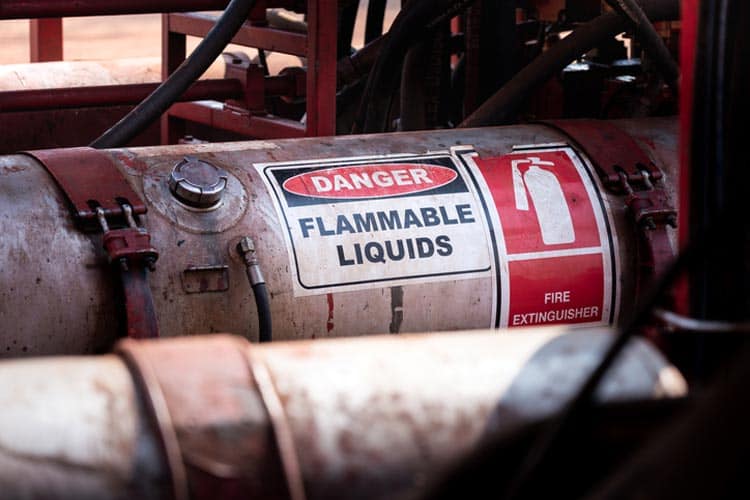First and foremost, it’s essential to understand that flammable liquids can pose serious risks if they’re not handled properly. These substances have the potential to ignite and cause fires or explosions, which can result in severe injuries, property damage, and even fatalities. That’s why it’s critical to take the necessary precautions when working with flammable liquids to ensure that everyone involved stays safe.
One of the biggest dangers associated with flammable liquids is their ability to ignite quickly. These substances can ignite with just a spark, static electricity, or heat. That’s why it’s crucial to store flammable liquids in a safe place away from heat sources or electrical equipment that could cause them to ignite. You should also avoid smoking, using open flames, or creating sparks around flammable liquids.
Another danger associated with flammable liquids is their ability to release vapours. When these substances evaporate, they release gases that can ignite if they come into contact with a spark or heat source. That’s why it’s crucial to ensure that any containers holding flammable liquids are tightly sealed when not in use. You should also make sure that the area around the containers is well-ventilated to prevent the buildup of vapours.
If you’re working with flammable liquids, you should also wear appropriate personal protective equipment (PPE). This includes goggles or a face shield to protect your eyes and face from splashes or spills, gloves to protect your hands, and a lab coat or other protective clothing to protect your skin. You should also wear non-slip shoes with good traction to prevent slips and falls.
It’s also crucial to follow proper handling procedures when working with flammable liquids. This includes ensuring that any containers holding these substances are labelled appropriately and that you know what the substance is and its associated hazards. You should also make sure that you have the proper training and qualifications to handle these substances safely.
In addition to following proper handling procedures, it’s also essential to have an emergency plan in place. If a fire or explosion does occur, you need to know what steps to take to protect yourself and others. This includes knowing where the nearest fire extinguisher is located and how to use it, knowing the location of emergency exits, and having a designated meeting place outside the building.
Finally, it’s essential to remember that safety is everyone’s responsibility. If you notice any potential hazards or unsafe practices, it’s crucial to speak up and bring them to the attention of your supervisor or safety officer. By working together, we can all help to ensure that everyone stays safe when working with flammable liquids.
In conclusion, working with flammable liquids can be dangerous, but by following proper safety procedures and taking the necessary precautions, you can protect yourself and others around you. Remember to store flammable liquids in a safe place away from heat sources, wear appropriate PPE, follow proper handling procedures, have an emergency plan in place, and speak up if you notice any potential hazards. Stay safe out there, and I’ll catch you on the flip side!
Cheers,

![]()






